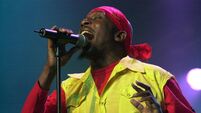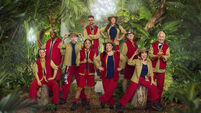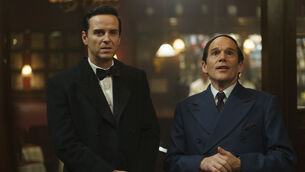Myth and might in Beara: Great tales from West Cork
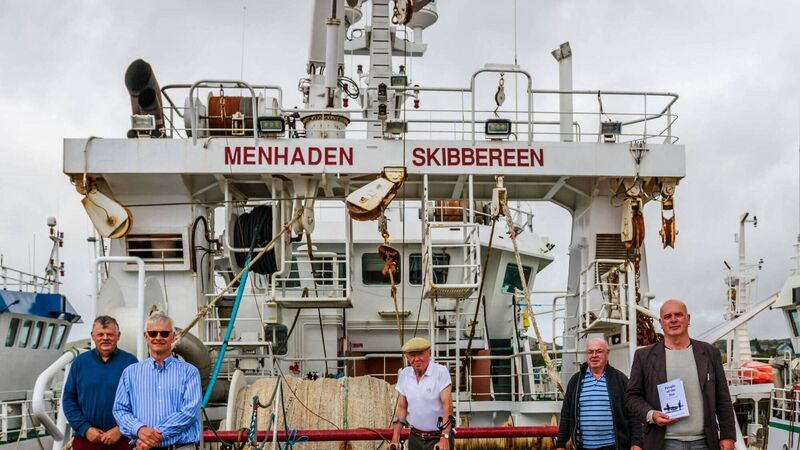
Jim O’Sullivan (Beara Tourism), Robin Barnett (British Ambassador to Ireland), Paul Smithwick (Founder, Sullivan’s Ale), Larry Murphy (owner and skipper of the Menhaden), and Marc O’Sullivan Vallig (author) at the launch of ‘People of the Sea: A Maritime History of Beara’ in Castletownbere. Picture: Anne Marie Cronin Photography
CRATES of fish were stacked up on the pier awaiting collection. Fishermen in yellow oilskins crowded the pier busy with a million tasks. Boats thronged the water. The scene was Garnish pier in the Beara Peninsula in the 1970s as recalled by writer and artist Marc O’Sullivan Vallig. He didn’t know it then but he was witness to an entire way of life passing out of existence. It was a world defined as much by hard work as by its array of characters. The hazards of the sea are painfully evoked by a memorial at Dinish Island to 73 men who drowned over the years, among them the author’s uncle.
Now it’s a different story at Garnish. Barely a couple of boats pass by in a day. The social structure that supported the fishing industry is long gone. The boats that tie up in Castletownbere further up the peninsula are international super trawlers crewed by Filipinos or eastern Europeans.
Amid the hardship there is much humour too: “Stories were told of salmon fishermen disguising themselves with more elaborate headgear, balaclavas and even saucepans, when they were being pursued by the Navy at sea.” Beara is the middle peninsula of the five that thrust out into the Atlantic south of the River Shannon. In this impassioned study, Marc O’Sullivan Vallig casts his net not just over over this small area near Dursey Island but the entire peninsula. Beara includes two counties - Cork which takes in all the southern part and half the north, and Kerry which comprises about a fifth of the landmass to the east.
It is a mountainous landscape of wondrous hills and glorious valleys where stirring tales of adventure and mythological beings were told since it was first populated. O’Sullivan Vallig sketches some of the myths to whet our appetites.
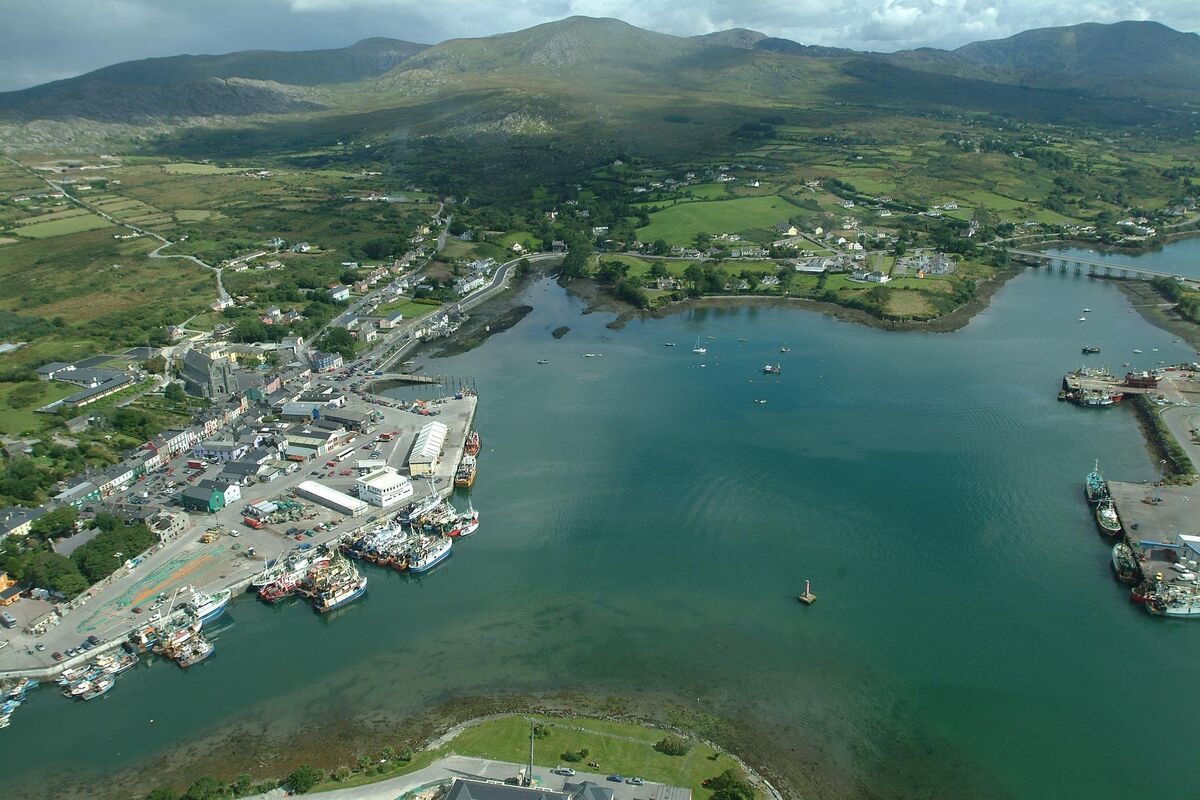
The Cailleach Bheára lived for 900 years before being turned to stone in the parish of Kilcatherine. Also known as Baoi, she gave her name to several placenames including the old name for Dursey Island, Oileán Baoi. Baoi reared a child on the island called Corc, who was born through incest. Day by day, Baoi washed the ‘sin’ from the child onto a bull’s back and when it was cleansed the bull, followed by a cow and a calf, jumped into the sea. Hence, the Bull, Cow and Calf rocks which bring the Beara Peninsula to a dramatic point. The Bull Rock is undercut by a natural sea tunnel and it was through here that the souls of the dead were said to pass in the time of the Milesians who were one of the first tribes to settle in the country.
As mythology gave way to history another set of fascinating characters emerged. Chief among these was the chieftain Dónal Cam O’Sullivan Beare who led 1,000 of his clan on a 500km march to safety to escape the besieging English forces under Carew in 1602.
Of course Beara is also a seascape of towns and villages, deep harbours, hidden inlets and attractive islands, and is as encrusted with contemporary stories as the hull of a trawler is with limpets. And of course there is the unforgiving sea.
The second part of the book comprises a series of interviews with local people about their part in the evolving story of Beara. The practice of seine fishing for mackerel is recalled by Dónal Kelly: ”they always fished at night when they could see the baraois or phosphorescence”. Declan O’Sullivan of Garnish relates the story of how his grandfather set a national record by landing 79,000 mackerel in a single night. And built his house on the proceeds. Rosarie O’Neill paints a vibrant picture of life in Dursey Island when up to 17 children attended the school and the population reached 60. Martin Sullivan describes heroic search and rescue operations carried out by the Castletownbere Coastguard.
Beara was of huge strategic importance especially after Wolf Tone’s failed attempt at fomenting revolution at Bantry Bay in 1796. Ted O’Sullivan of Bere Island explains that “the British Navy set up camp within a year of Wolfe Tone coming into the harbour”. One hundred years later they installed three huge gun batteries at each end, augmented by lookout towers, a communications system and a barracks. “There was big money in it,” says O’Sullivan. “In the 1901 census, every house had a lodger, and the lodger would be a carpenter or a plumber or a builder’s labourer or whatever”.
Bere Island was defined as a Treaty Port along with Spike Island and Lough Swilly and remained under British control when the state achieved independence in 1922. The ports were eventually ceded in 1938.
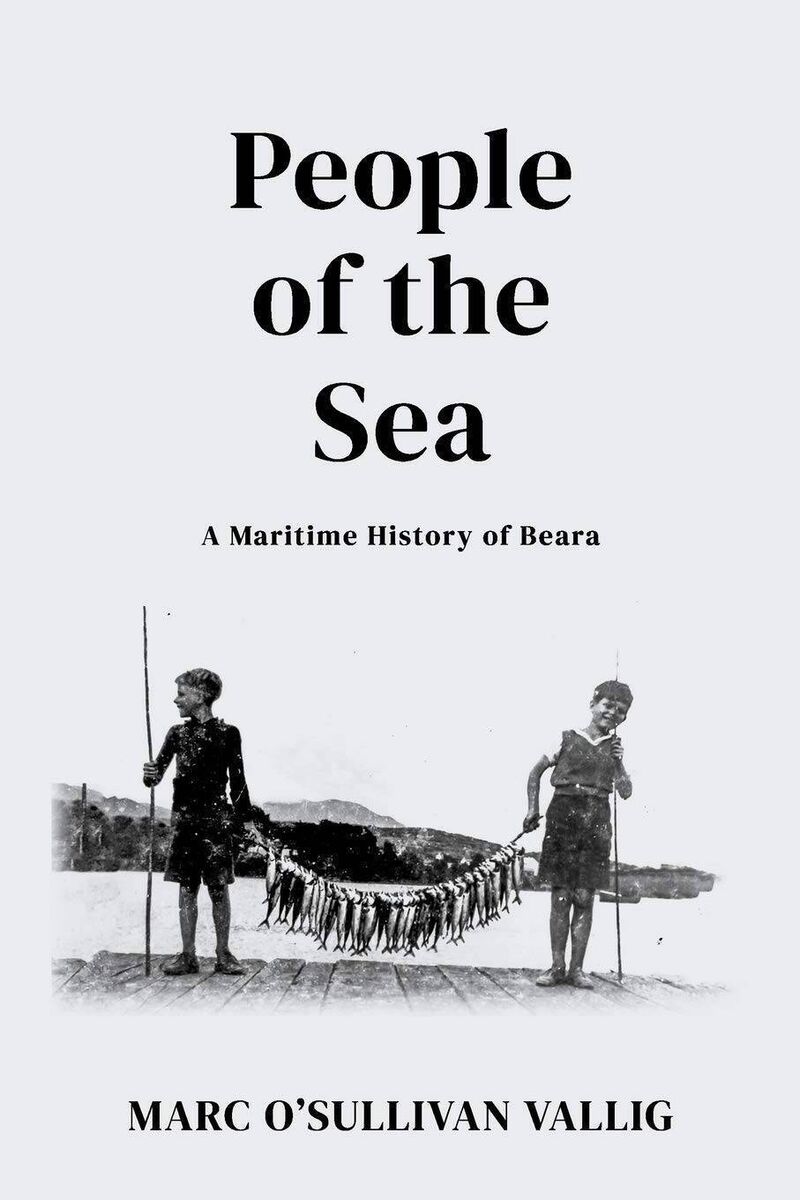
When the big trawlers came to Beara in the 1960s they decimated the stocks for the smaller fishermen. According to Ger Lynch of Ardgroom “they just wiped out the stocks. My father took his nets out, he had to give up”. The mackerel boom of the 1970s was an exception and was literally a rising tide that lifted all boats. With over-fishing came resourcefulness and ingenuity. The local fishermen’s organisation came up with the idea of V-notching the tail of female lobster so they could continue to breed. When these lobsters were caught they would be returned to the sea.
Castletownbere has long had an international flavour and Spanish and French accents were common on the streets of the town for decades. And the money they spent in the town was appreciated. The town exported its produce all over Europe and even the Caribbean. Among the more exotic visitors were the Russian factory ships mainly crewed by women. In the early 1990s the ships would follow the shoals of mackerel down the west coast of Scotland, anchor for a while in Killybegs, Co Donegal before arriving to Castletownbere. The Russians would be escorted around the town by a KGB officer as they shopped for shoes and Wranglers.
According to 2018 statistics the value of landings in Castletownbere was €108m which includes Irish and foreign fish landings. The port is of major significance and there are expectations that more landing space can be provided. The port caters for about 250 fishermen but, in a sign of the times, not many of them are Irish.
The book lacks an index and a map or two would have helped pinpoint the many events described therein. However, these are minor quibbles and its double-faceted approach of mythology and present-day life perfectly bookend this fascinating place. Above all, it is a song of praise to the lives of the people.
Were these the stories of one entire country they would form part of a fascinating record and irresistible history but contextually they contribute to part of a magnificent tapestry in the country as a whole. O’Sullivan Vallig has written an important contribution to the library of studies on the peninsula. Soak up its mythology which rivals anything in Europe, and learn about the men and women who daily faced, and face, the might of the Atlantic to earn a living. Just whatever you do, don’t called it the Beara.

